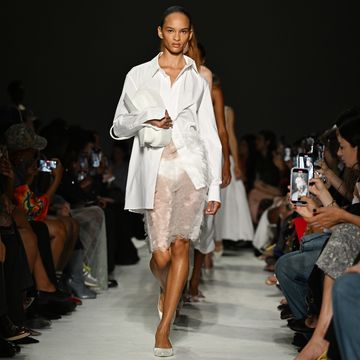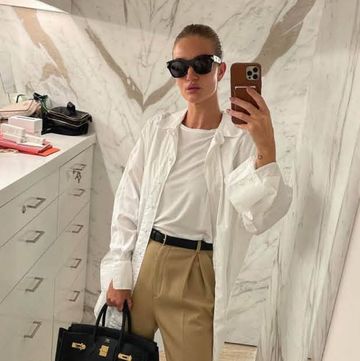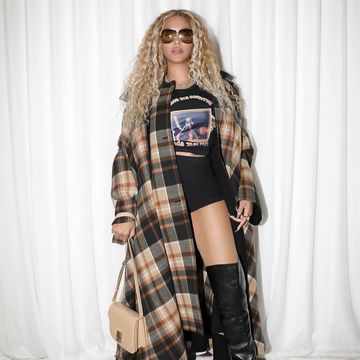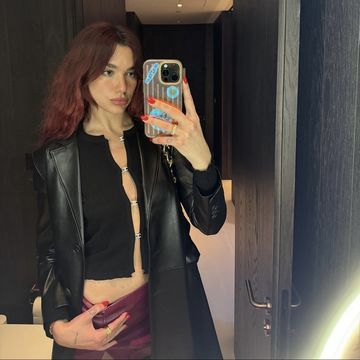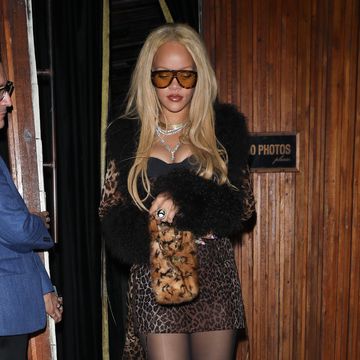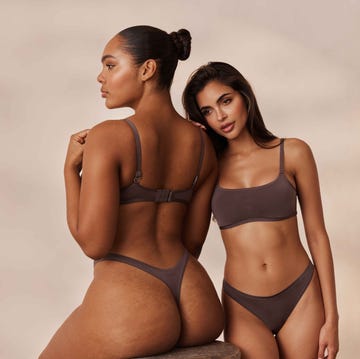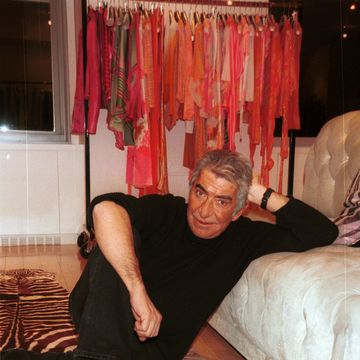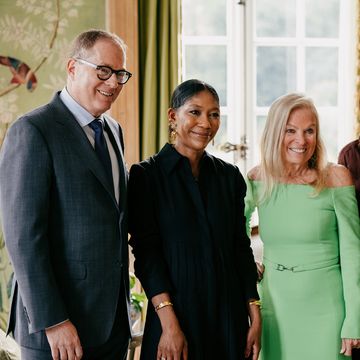'I am not a woman!' Karl Lagerfeld declared somewhat unnecessarily backstage after his AW15 Fendi show in Milan last February. 'I like to be surrounded by women. I like the style, taste and talent of women because I don't wear the clothes. That's why I'm not crazy to have boys or men as assistants when I am doing dresses: I don't want to discuss dresses with men. All the women here, they are all great. They made Fendi once again a powerhouse.'
The living legend that is Lagerfeld (who has also clocked up 33 years at Chanel, his most famous design gig) holds the record for the longest-standing collaboration in fashion history with Fendi – it's been 50 years since he first became its creative director. 'I should be in the Guinness Book,' he told me. 'No other designer has worked that long.'
Strong women are at the centre of Karl's life and work, which to him are one and the same thing, but at Fendi he's referring to one in particular: Silvia Venturini Fendi, the house's creative director of accessories and the men's lines. Her grandparents, Edoardo and Adele, founded Fendi in 1925. Their five daughters, Paola, Anna, Franca, Carla and Alda, then entered the company and transformed it from a fur and leather house into a leading international ready-to-wear and accessories brand powered by women. Silvia, daughter of Anna, now in her fifties, oversaw the creation of the Fendi Baguette bags that catapulted the brand to uber-covetable status in 1997. That was the first time the words 'waiting list' entered the fashion lexicon. The Baguette's phenomenal success made Fendi attractive to potential buyers and, in 2001, the luxury-goods giant LVMH acquired the brand.
Backstage before the show, Silvia was surveying the running boards (photographs of the show's models in their outfits, pinned to a board in order of appearance). Was she happy with the collection Mr Lagerfeld had designed?
'Yes, it's very powerful but with personality – just what Fendi should be today,' she said. And would she be wearing any of it – the fluffy beige trousers hewn from sheepskin, say, or one of the Micro Peekaboo bags dangling a supersized fur Karlito charm? She laughed. Dressed head-to-toe in black, her only embellishment an array of her daughter Delfina Delettrez's jewellery, Silvia said: 'I always dress like this and in 10 years I will still be like this.' So why does she think Fendi's relationship with Lagerfeld has stood the test of time in an industry that craves the young and the new? 'Because he is the most inventive and curious creator of clothes and he has such discipline!'
At that moment, the other strong women in Lagerfeld's life rocked up. Amanda Harlech, his muse and chief collaborator (on both Fendi and Chanel), and Charlotte Stockdale, Fendi's stylist, the latter wearing a cloud of frizzy Mongolian shearling. Of the 52 show looks, I asked each of them to choose one outfit they want to take home. After much deliberation, Harlech chose a black leather skirt with articulated side panels pictured with fluffy shearling boots and a skinny-rib poloneck. 'It's clever, sleek, dynamic and modern, but I'd wear it with trainers,' she said.
'Oh god!' cried Stockdale, alarmed by further decision-making after 48 hours of doing just that on almost no sleep. 'Don't make me choose just one look,' she pleaded, unable to decide between the gigantic cream shearling coat (modelled by Lindsey Wixson) or the 'really practical' curvy short black coat (as seen on new face Mica Arganaraz).
But back to Lagerfeld and the power of strong women: 'I like to have those girls around me, otherwise I would be bored doing it alone – it is important to be surrounded by the right people. Charlotte is great, Amanda is great, Silvia is great. And Alessia, please don't forget her, she runs the studio here at Fendi and she is excellent. If I'm not surrounded by this kind of person, it's not worth it.'
Finally, braving the question one should never ask Mr Lagerfeld, being one of the last of his generation still working in fashion, let alone at the top of his game: why still do it? To which he replied: 'I love working. I'm very lucky that I can do whatever I want in the most divine conditions in a period when others have their success behind them. I am doing better now in everything in the world than 20 or 30 years ago,' he said. Adding only, 'Not everyone is born to survive.'
Photography: Donald Gjoka

